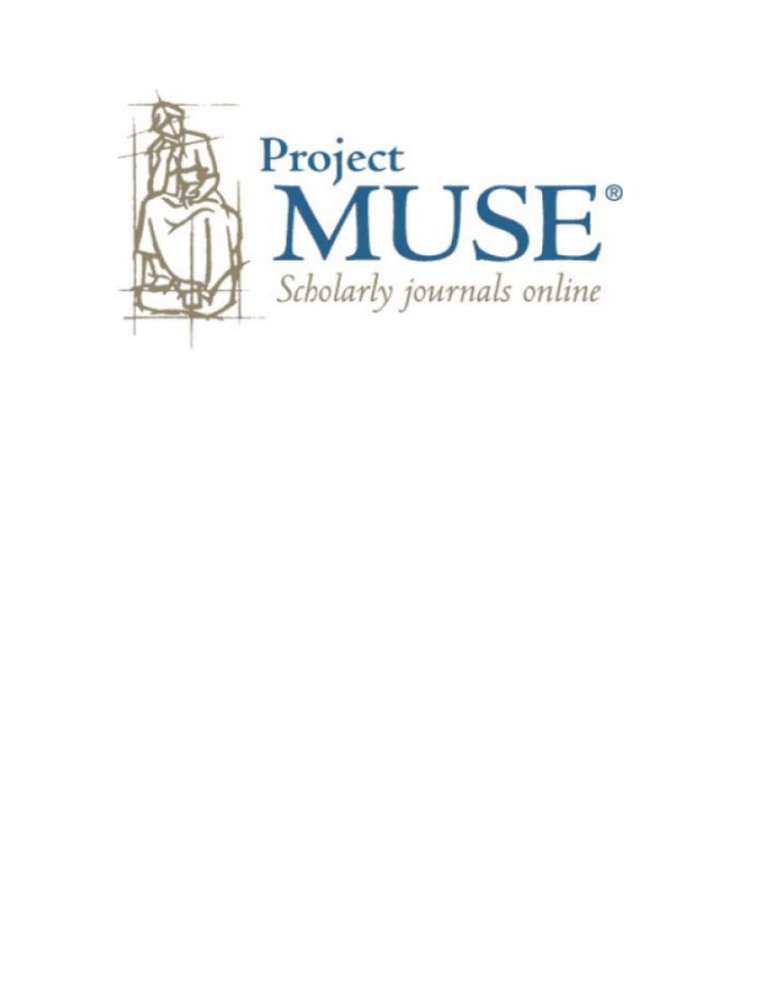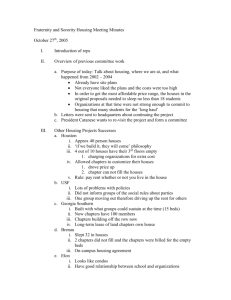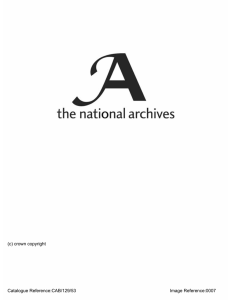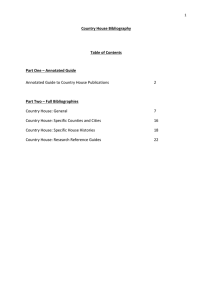Document 12408546
advertisement

952 R E N A IS S A N CE Q U A R T ERLY Beat Kümin. Drinking Matters: Public Houses and Social Exchange in Early Modern Central Europe. New York: Palgrave Macmillan, 2007. xx + 283 pp. + 10 color pls. index. illus. tbls. map. gloss. bibl. $85. ISBN: 978–0–230–55408–5. Beat Kümin’s study examines public houses in Germany and Switzerland from the late Middle Ages through the long eighteenth century, with a primary focus on the period between 1500 and 1800. The work grows out of specific case studies of the districts of Dachau and Laupen, contextualized with prescriptive sources from Bavaria and the Republic of Bern more generally and then placed in the wider European context. Kümin’s stated goal is to establish the significance of drinking establishments in early modern Europe, particularly in terms of their sociocultural functions and relationship to historical change. The book challenges the idea that early modern public houses were somehow static or traditional, as opposed to supposedly more modern and sophisticated institutions such as coffeehouses and restaurants. Instead, Kümin argues, premodern public houses were dynamic institutions that demonstrated great flexibility in meeting consumer demands in an ever-changing environment. Located at both physical and metaphorical crossroads, inns and taverns were in a constant state of renegotiation and social reconstruction. They reached their apex as centers of communication and social exchange during the golden age of the eighteenth century, and only after 1800, with the rise of rival institutions such as restaurants and theaters, did they begin to lose their central importance to social and commercial life. Using the example of the public house as a starting point, Kümin then raises more general questions about modernization theories that tend to generalize based on stereotypes rather than taking local conditions and social complexities into account. Kümin’s study begins with two introductory chapters treating types of drinking establishments and their topography, the publican profession, kinds of patrons, and the interests of the authorities in these institutions. The next two chapters consider the functions of the public house, first outlining the provision of food, drink, and livelihoods for publican families and servants, and then examining their role as “principal facilitators” of early modern communications (115). In all of these roles, variety and versatility were the rule. The wide range of topics treated in these four chapters naturally presented the author with some challenges, which are inevitable in a comparative study of this scope. In spite of the stress on the great variety in constructions of public houses throughout the empire, the study at times seems to allow a few examples taken from specific case studies to speak for entire territories. This occurs over time as well as space; not surprisingly, archival sources are weighted toward the eighteenth century, and examples from very different periods are at times conflated with little attention to the shifts that had taken place in between. It is also sometimes jarring to find archival examples from Germany and Switzerland being contextualized with literary examples from England, although German-language literature on the topic is well-represented in the bibliography of primary sources. These are minor concerns, however, and do not detract from the author’s overall arguments. R E V IE WS 953 The study is at its best in the last two chapters, which place public houses into a more interpretive framework, first from the perspective of early modern observers and finally within the context of larger historical questions. Generally Kümin identifies an increase in variety and quality of drinking establishments over the course of the period, emphasizing the publicans’ response to consumer demands and the process of professionalization of the innkeeper trade. Throughout, however, the author warns against ignoring the many variables that affected these trends, as the ever-malleable public houses constantly reconstructed themselves to adjust to changing contexts and to meet the shifting needs of the public. The final chapter illuminates the ways in which public houses interrelated with other public institutions (church, council house, and market) and then turns the evidence from the study against the familiar historical questions of state formation, social disciplining, and the emergence of a public sphere. In all of these — most notably in providing a forum for public opinion — the public house played a role that has thus far been largely ignored. Kümin’s wide-ranging study successfully challenges the standard emphasis on the eighteenth century as a turning point in the recognition of market forces and consumer demand. It also presents a readable, informative, and richly illustrated account of details ranging from floor plans to dinner menus, punctuated with nineteen color plates and thirty-one black-and-white images, a rare treat in today’s scholarly market. The result is an impressive overview that recognizes the early modern public house as the primary site of social exchange and makes a convincing argument for its market-oriented versatility. B. ANN TLUSTY Bucknell University




